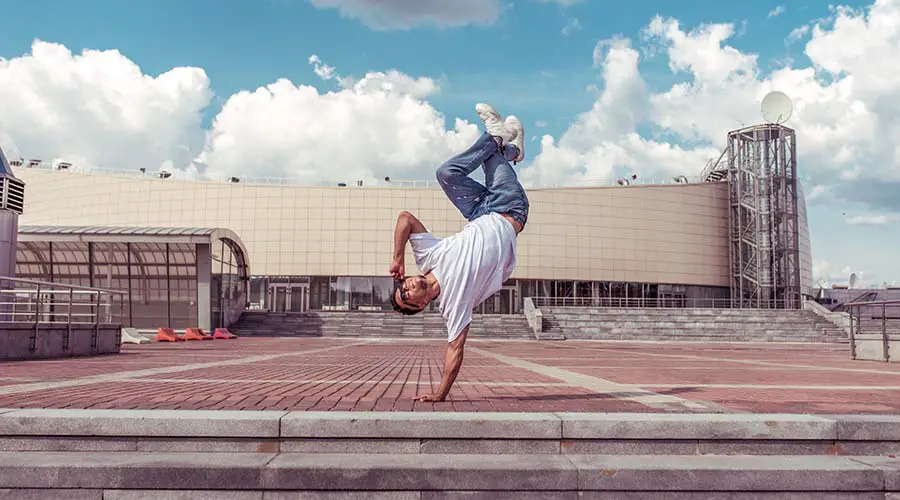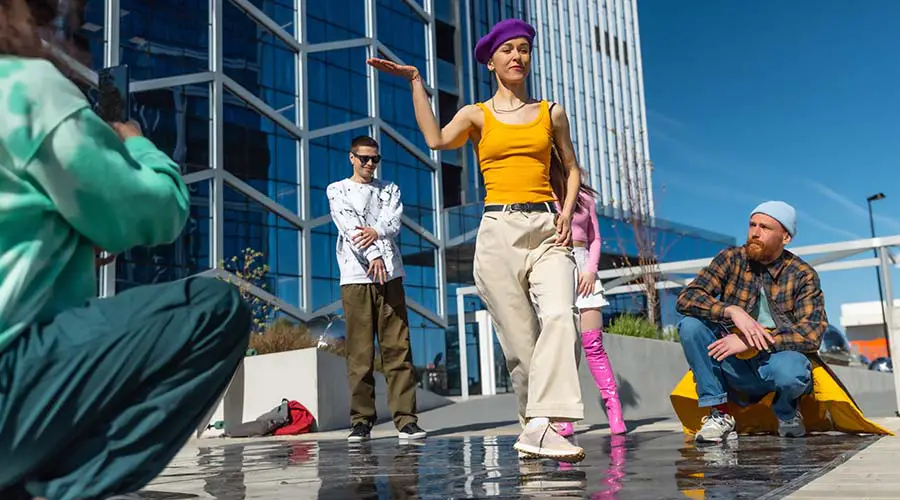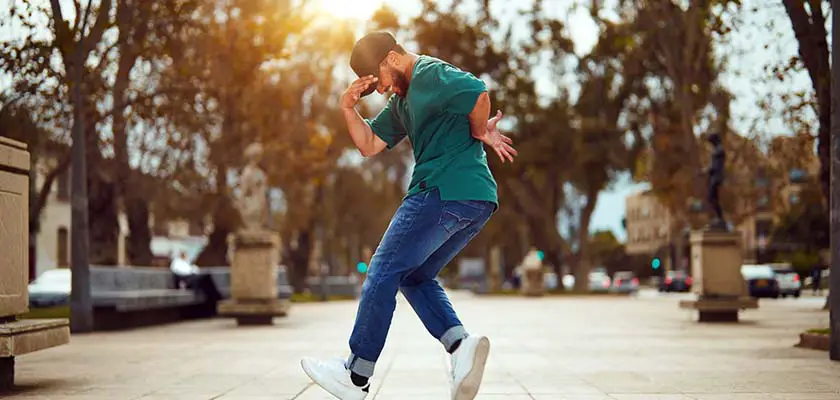Do you know the main rules of breaking, a sport also known as breakdance? This urban dance emerged as part of hip hop culture in the 1970s on the outskirts of the United States, specifically in the Bronx.
Its main objective was to appease the territorial disputes that took place between the black and Latino communities in this part of New York. However, as time went by, breaking gained more and more followers.
This popularity began because the acrobatic movements made to the rhythm and beat of the music by the dancers are extremely engaging. As a result, breaking guarantees a lot of entertainment and cheering for those watching the performance.

It’s worth noting that the competitors are called B-Boys when they’re men and B-Girls when they’re women!
In fact, breaking has become such a big sport that in 2018 it made its debut at the 2018 Youth Olympic Games in Buenos Aires, and it was a great success!
So this year, 2024, breaking has reached its apex, as it will make its debut at the Paris Olympics. This means that breaking is no longer a dance with 100% free movement, but a sport with rules, scores and regulations to follow.
And that’s what we’re going to talk about here. It’s time to clear up all your doubts about breaking rules!
Check it out👇
Rules of breaking: evaluation criteria
For the sport to be part of the Olympics, it was necessary to define the rules of breaking and, with that, the main evaluation criteria of the sport;
To do this, two great breaking legends, Niels “Storm” Robitzky from Germany and Kevin “Renegade” Gopi from Great Britain, got involved in the process in order to create a suitable scoring model.
So they came up with a system that was divided into three categories: mind, body and soul. This will be the first time breakdance has had a single judging system around the world.
And how do these categories of rules of breaking work? Let’s get to know them!
- Body: refers to the physical characteristics and judges the technique and variety of movements of each dancer;
- Mind: encompasses artistic characteristics and judges the creativity and personality of the contestants.
- Soul: judges the interpretative characteristics, performance and musicality of the athletes.
In other words, winning athletes need to excel in skills that involve: creativity, personality, technique, variety, performance and musicality.
It’s also worth noting that this is an easy-to-understand system for people who aren’t familiar with the sport. Thus, by watching the championship, it will be possible to understand what is being judged, even if this is the spectator’s first contact with breaking.
Rules of breaking: how is the competition run?
At the 2024 Olympics, one of the rules of breaking is that the sport will have 32 athletes competing. Of these, 16 will compete in the men’s category and 16 in the women’s category.
Each athlete will face the other in individual contests, so it will be like this: one performs and then it’s the opponent’s turn to perform, completing the duel.
And of course there’s no forgetting one important part of breakdancing: the music. Therefore, the choice of sounds played in each battle is left to the DJ, who will keep the rhythm rocking the disputes;
The duels will have a predetermined number of rounds, which vary according to the stage of the competition, with the maximum time for each round being 60 seconds. Finally, it’s worth remembering that there will be no specific rules on which moves and stunts can be performed during the battle.
Therefore, the choice of choreography is 100% up to the athletes, who must train and rehearse in advance to ensure that, when it comes time to perform, their moves are prepared. Then they can surprise the judges and achieve the best possible score in the competition.
Breaking at the Paris Olympics in 2024

As we mentioned above in this article all about breaking, in 2024 breakdancing will make its debut as an Olympic sport;
The idea of making the sport official and adding it to the world’s biggest sporting competition was an initiative of the International Olympic Committee (IOC). The committee’s main objective was to increase the audience and popularity of the Olympics among young people.
The same has already been done with skateboarding and surfing, sports that played this role in the Tokyo edition, which took place in 2021 and was a great success!
However, for a sport to become Olympic it must meet certain requirements, such as: being widely practiced by men in at least 75 countries and four continents, and by women in at least 25 countries and three continents.
Breaking at the Olympics: how do the qualifying stages work?
To qualify for the Olympics, athletes in the sport go through qualifying stages. France, as the host country of the competition, already has two guaranteed places, one for B-Boy and one for B-girl. It also has four other university places, two for each gender;
That leaves 26 athletes who will compete in break dancing at the Olympics. The qualifiers are being held in three separate championships:
- The 2023 World Championship, which took place in September in Belgium, will have one qualifier per gender;
- Continental Games/Championships (continental qualifiers), which will determine ten places around the world;
- The Olympic Qualifying Series (OQS), which takes place between March and June 2024, will determine the last 14 places remaining for the Paris Olympics.
It’s time to see how the rules of breaking work in practice!
Are you curious to see how the rules of breaking will work in practice? Then get ready to watch the sport at the 2024 Olympics!
The sport will be played on August 9 and 10 at Place de la Concorde, the epicenter of urban sports during the Olympic Games.
Incidentally, the BMX Freestyle, skateboarding and 3×3 basketball competitions will also take place there;
So, did you like learning more about the rules of breaking? Enjoy being here and check out our other articles on this sport and many others! Don’t forget to comment on what you thought of this content made especially for those who love sport!



